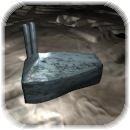 Table of contents
<< previous page
next page >>
Table of contents
<< previous page
next page >>
3. Solar systems By clicking on "solar systems" in Kosmor's main menu, the corresponding control pages are displayed. Here, you can build mines (producing raw materials),
construct factories, build a shipyard, and transfer all goods between your solar systems.
By clicking on "solar systems" in Kosmor's main menu, the corresponding control pages are displayed. Here, you can build mines (producing raw materials),
construct factories, build a shipyard, and transfer all goods between your solar systems.Every page contains a pulldown menu, in which you can select the solar system you are currently working on. If you find the abbreviation "(HP)" after the name of a solar system, then this solar system contains your home planet (HP). The base planet of a solar system has several characteristics, which vary throughout the galaxy. It is highly unlikely that you will find two identical base planets on your travels through the galaxy. The characteristics are:
You can construct buildings on every planet you control. They will positively enhance some of the solar systems properties (this feature is only available for pro-users). The buildings and their effect are more thoroughly described in the appendix. Also, you can determine the solar systems combat strategy, in case the selected system is under attack. If you choose "attack weakest enemy first", the orbital defense systems will open fire on the weakest target. If you chose "attack strongest enemy first", the defense stations will act accordingly. The planets' native inhabitants produce tax income for you, their legal imperator. You can freely set the tax rate in the range of 0 to 15 percent. Of course, your tax income depends on the tax rate you chose, as well as the size of the native population on the corresponding planet. Please note, that the population grows faster if you set a lower tax rate and grows slower or even stagnates or shrinks if you set the tax rate too high. The last turn's change in population is indicated as the number within brackets below. Also, please note, that the population growth is subject to a maximum population barrier, which depends on the size of the planet. If the populiation gets close to this barrier, the population growth will decrease. On the bottom of the screen, all upkeep costs are displayed. The High Council commited every imperator to pay a distributive tax on every solar system controlled. This is called "star tax":
Note: To the right of the solar system selector, you see a clickable icon, which leads to a tabular solar system overview! It helps you to manage high numbers of solar systems.  Every solar system has a differnt productivity of the following raw materials:
Every solar system has a differnt productivity of the following raw materials:
All modern optical parallel supercomputers depend on this technology. Additionally, every piece of modern communication hardware and communication links are made of specially refined optium fibres. On the left side, the extension stage of the mines is displayed. By clicking on the appropriate icons, you can either construct new mines or remove them, again. If you plan to build a mine, please consider that the construction costs are 2000 credits (once) and the upkeep costs are 100 credits (every turn) per mine. In the lower left column, the current and maximum numer of erectable mines is displayed. On the right side, you see the productivity rates of each raw material. As described earlier, they depend on the type of solar system and the race of the native population. One mine exactly produces "productivity rate" raw materials each turn. Example: 40 energium mines have been build on a planet with an energium productivity rate of 7. This yields 280 units of energium every turn. Note: The "Ore refinery" building increases the productivity rates by 30 percent In the lower right column, the last turns' upkeep costs are displayed. Tip: Please consider building mines on planets with high productivity rates. This will lower your average cost per unit of raw material. (If you only control planets with low productivity rates, you can alternatively buy raw materials on the goods market)  In the "factories" screen, you can build specialized production facilities.
Every turn, these factories can be extended by one technology level, by clicking on the appropriate icon.
There are two basic factory types, you can build: supply and component factories. In general, raw materials are needed to construct supplies, and supplies and credits are needed to build components. Spaceships are built out of these components (using the shipyard, see below).
In the "factories" screen, you can build specialized production facilities.
Every turn, these factories can be extended by one technology level, by clicking on the appropriate icon.
There are two basic factory types, you can build: supply and component factories. In general, raw materials are needed to construct supplies, and supplies and credits are needed to build components. Spaceships are built out of these components (using the shipyard, see below).
The extension of a factory (by one techlevel) costs level2 * 500 credits (once), the daily upkeep is level2 * 100 credits (every turn). If you choose to tear down factories, the daily upkeep will be reduced, but the installation cost cannot be refunded, so think twice. Every factory has a productive capacity of level2 production points. To produce a good of the level "x", exactly "x" production points are required. To finally build a good, click on one of the production icons within a factory. There are 1, 5, and 10-fold production icons, just choose one. On the right of these icons the missing input factors are displayed. Factories gather surplus production points up to the triple of the daily capacity. So you can save production capacity over a few turns to build many units at once. A factory can only build goods of a techlevel up to its own techlevel! Classification of factory types: Supply factories:
Diese Factories produce goods, which are needed for further processing in the component factories. The maximum techlevel (= extension) of supply factories is unlimited. But, the most advanced supply goods are within the techlevel 8. Therefore, supply factories of a higher techlevel only expant the production capacity, they do not offer further goods. Component factories:
These factories take supplies (and credits) as input goods and produce ships' components, which can be installed in your spaceships in the shipyard (see below). The "hulls" factory can be extended to a maximum techlevel of 11 (there are only 11 hull types), the other component factories to a techlevel of 12 (here, there are 12 different ships' components for each factory). Example: To build the hull of a fregatte, you need a "hull" factory level of 5 and the following resources in stock (of your production planet): credits: 5750. machinery controllers: 10 radar dishes: 5 sensor phalanxes: 5 life support systems: 5 optium fibres: 15 photon controllers: 5 communication modules: 5 titanium plates: 30 hull modules: 5 energium containers: 15 crystal converters: 5 energy converters: 5 Production of goods: If you click on the "production" link in the factory overview, the corresponding factories' production menu is displayed. In the lower part of the screen, the goods available for production are displayed (this depends on the technology level of the factory). On the right side, you see the clickable production icons. If they are marked with a red exclamation mark, there is at least one input factor missing. The quantity and description of the missing input factors are displayed, too. In component factories, there is a helpful tool, that allows you to produce the necessary missing input factors. Just click on the "produce inputs" link, to automatically try to produce all the necessary input factors for the desired component. To finalize production, remember to click on the production quantity buttons (1, 5, or 10 units). Example: A machinery factor of techlevel 3 has a unique installation cost of 500 + 2000 + 4500 credits (you need 3 turns to build it, as you can extend the factory only by one techlevel per turn). The factory has a daily production capacity of 9 production points. With those production points you could build 3 level-3 machinery goods, or 9 level-1 machinery goods or other combinations every turn. Tip: In the encyclopedia, all goods are described and their necessary input factors are listed. Tip: Try to fully utilize your productive capacity. As the production process transforms less valuable goods into more valuable ones, you can always profit from them. You could sell those more advanced goods on the goods market, for example.  You can build a shipyard in every solar system you control. To expand the shipyard, just click on the "expansion" button, just like in the factories screen. A shipyard has the same building and upkeep costs as a factory.
You can build a shipyard in every solar system you control. To expand the shipyard, just click on the "expansion" button, just like in the factories screen. A shipyard has the same building and upkeep costs as a factory.
Using a shipyard, you can transform your compontents into a spaceship and configure your own spaceships... Example: If you have a Tech-7 hull, four Tech-6 drives, and up 8 lasers, 5 torpedo launchers and 3 shield systems in stock of a shipyard-solar system (shipyard technology level 7), you can build a considerable warship. Watch out:
Example: The maximum configuration for a space probe (tech 1 hull) is one tech-3 laser, one tech-3 drive and one tech-3 shield. It has no torpedo hardpoints. Construction of ships If you have build a shipyard of at least technology level 1, the "build ship" link appears. If you click on it, you are transported to the construction menu: First, you select a hull (must be in stock), out of which to build the new ship. After that, the hull configuration page is opened. Here, you can select drives, lasers, torpedos and shield systems to install into your new spaceship. Use SHIFT or CTRL in your browser to select multiple components! If you then click on the "build" button, a last confirmation page is displayed. Here you can name your new ship, review the upkeep (cost per turn) and the combat power, before finally confirming the production. Now your ship is being produced. You will be notified via spacemail, when the production is complete. See the appendix a for the list of construction times of different hulls. Note: As a normal user, you can extend the shipyard up to a technology level of 5 and can install components of technology levels up to 7 onto your ships. As a pro user you can build all ships and utilize all components. Reconfiguration and disassmbly of ships Ships can be individually configured with components. So you can always upgrade your ships' components, using the reconfigure link in the shipyard. The new components have to be in stock, and the ship that is about to be reconfigured must be in orbit of the shipyard solar system, though. Note: The ship's drives nees to be firmly connected with the ship's hull. If you want to upgrade the ship's drives, you have to disassmble the ship first. Note: The disassembly of ships might be a good idea, if you have more powerful replacement ships. You can sell the old parts on the market. Cost of ships A ship has a daily upkeep cost of hull tech-level2 * 500 credits. Space probes (tech 1 hull) and gliders (tech 2 hull), are an exception, though. They cost 1250 and 2250 credits, respectively. A solar system's stock stores all goods, that have been produced in the solar system or have been transported to it. Before you can build any ships, the necessary components (at least a hull and the drives) need to be in stock. The stock inventory lists all goods and quantities. Note: Conventional nonbiologic goods are sent via ultra high velocity cargo capsules between the solar systems. They have a daily range of 150 lightyears. If you send some goods from one solar system to another one, which is 200 lightyears apart, the goods will need 2 days to reach their destination. Note: You can also fill out several rows and choose different targets and quantites in one step. The dispatcher will automatically send all selected goods to their destinations. When dispatching goods, you have two additional options, you can select:
This overview shows the shipment queues on the selected solar system. If the goods have not yet been sent (i.e. the shipment order was given in the same turn), then the transfer can still be canceled. If the transport capsules are already on their way, there is no way to stop them... :-) Standing orders can be canceled at any time. |

 Table of contents
<< previous page
next page >>
Table of contents
<< previous page
next page >>